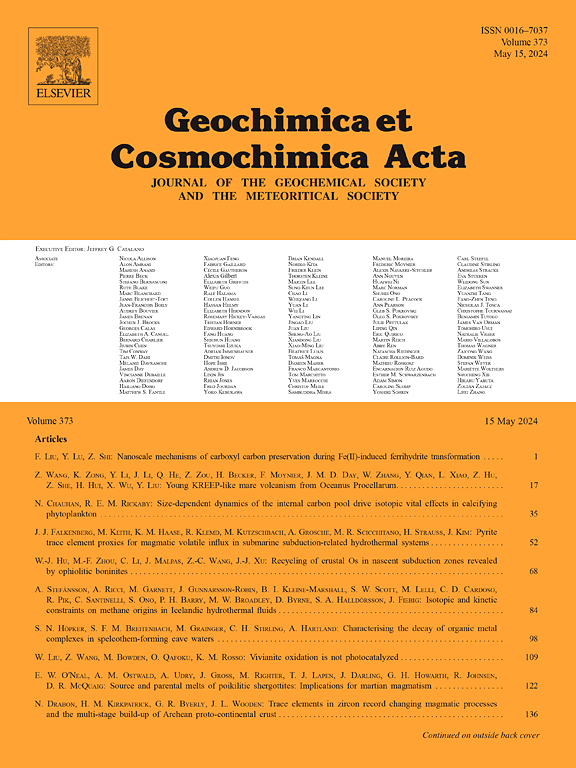Experimental pathways of clay formation and kinetics of basalt alteration in poor drainage systems: Implications for weathering
IF 4.5
1区 地球科学
Q1 GEOCHEMISTRY & GEOPHYSICS
引用次数: 0
Abstract
Basalt being the most dominant rock on the earth’s crust, contributes significantly to the global elemental cycle through weathering. In recent years, the potential of basalt weathering has been continuously scrutinized as a carbon dioxide removal (CDR) strategy. An accurate estimation of such large-scale processes requires a deeper insight into the mechanism controlling the basalt glass dissolution under field conditions. This contribution assesses the chemical evolution of fluid interacting with basalt glass in poorly drained regimes. Experiments showed a drop in kinetics of alteration (r求助全文
约1分钟内获得全文
求助全文
来源期刊

Geochimica et Cosmochimica Acta
地学-地球化学与地球物理
CiteScore
9.60
自引率
14.00%
发文量
437
审稿时长
6 months
期刊介绍:
Geochimica et Cosmochimica Acta publishes research papers in a wide range of subjects in terrestrial geochemistry, meteoritics, and planetary geochemistry. The scope of the journal includes:
1). Physical chemistry of gases, aqueous solutions, glasses, and crystalline solids
2). Igneous and metamorphic petrology
3). Chemical processes in the atmosphere, hydrosphere, biosphere, and lithosphere of the Earth
4). Organic geochemistry
5). Isotope geochemistry
6). Meteoritics and meteorite impacts
7). Lunar science; and
8). Planetary geochemistry.
 求助内容:
求助内容: 应助结果提醒方式:
应助结果提醒方式:


